Akash Mishra
@akashmishra.bsky.social
In summary, these findings suggest that HFOs across the hippocampal-cortical memory network represent a powerful coordinating mechanism. They may guide how our brains segment, encode, and retrieve rich, continuous episodic memories from our everyday lives (10/n)
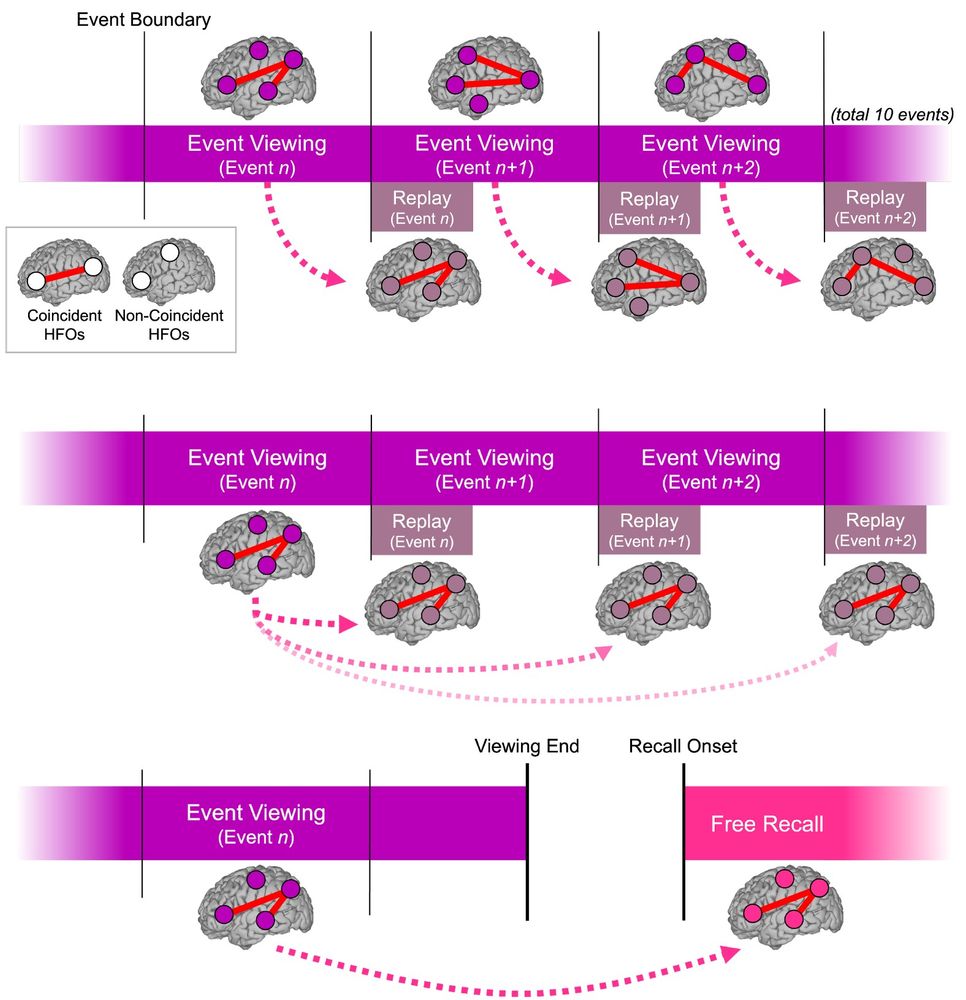
August 2, 2025 at 1:59 AM
In summary, these findings suggest that HFOs across the hippocampal-cortical memory network represent a powerful coordinating mechanism. They may guide how our brains segment, encode, and retrieve rich, continuous episodic memories from our everyday lives (10/n)
The strength of motif reactivation during replay and retrieval was related with whether participants later remembered the event. We also found that these unique motifs lingered for three subsequent replay periods. Hence, HFOs may help us bind new memories to older ones! (9/n)

August 2, 2025 at 1:59 AM
The strength of motif reactivation during replay and retrieval was related with whether participants later remembered the event. We also found that these unique motifs lingered for three subsequent replay periods. Hence, HFOs may help us bind new memories to older ones! (9/n)
Co-HFO motifs showed specificity for events and re-occurred not only in the immediate post-boundary “replay period” but also during later recall. This links co-HFOs with the reinstatement of memories during consolidation and retrieval. (8/n)

August 2, 2025 at 1:59 AM
Co-HFO motifs showed specificity for events and re-occurred not only in the immediate post-boundary “replay period” but also during later recall. This links co-HFOs with the reinstatement of memories during consolidation and retrieval. (8/n)
We then identified “co-HFO motifs,” or event-specific spatiotemporal patterns of co-HFOs that occurred during initial event viewing. We looked to see if these motifs re-emerged at event boundaries (replay) and during free recall (retrieval). (7/n)
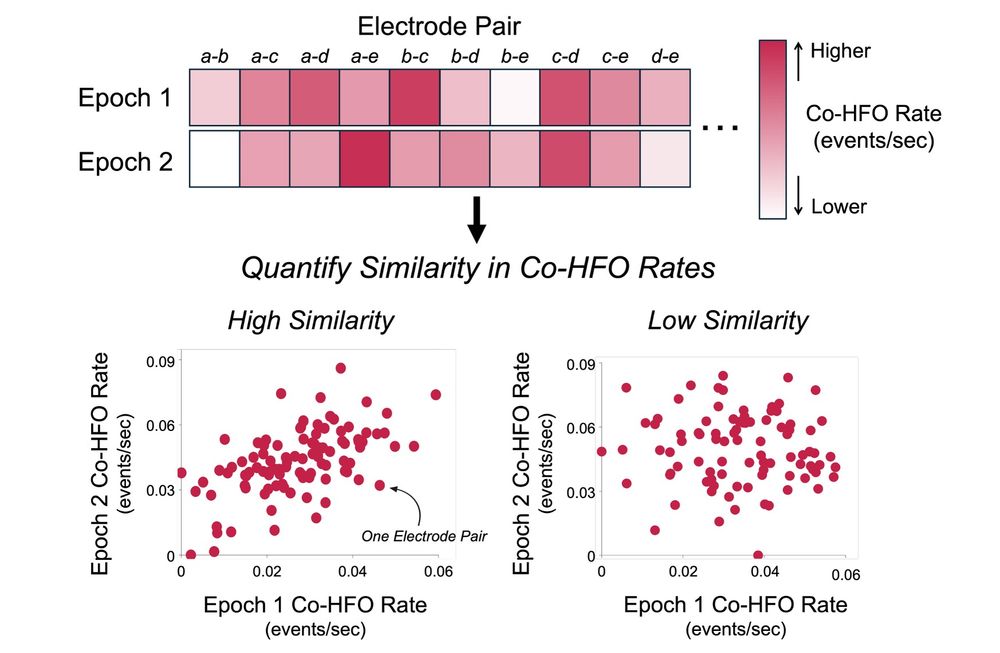
August 2, 2025 at 1:59 AM
We then identified “co-HFO motifs,” or event-specific spatiotemporal patterns of co-HFOs that occurred during initial event viewing. We looked to see if these motifs re-emerged at event boundaries (replay) and during free recall (retrieval). (7/n)
Further, co-HFO locations changed based on the “granularity” of the segmentation. Major event boundaries were more associated with co-HFOs in higher-order association cortices while simpler boundaries (e.g. camera angle changes) largely activated lower-order visual regions. (6/n)
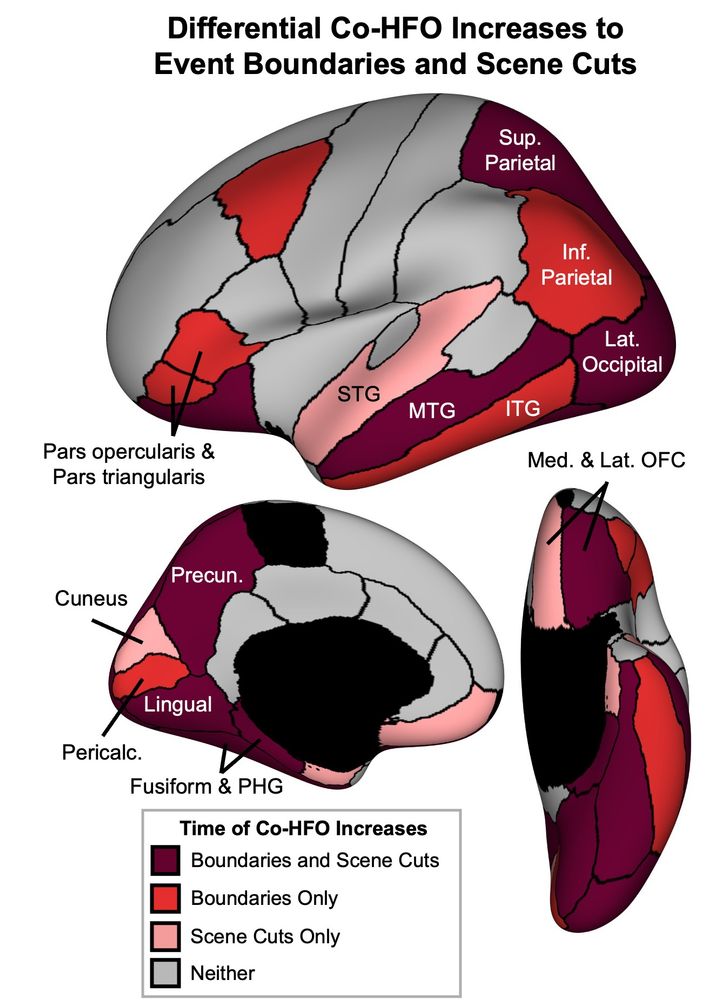
August 2, 2025 at 1:59 AM
Further, co-HFO locations changed based on the “granularity” of the segmentation. Major event boundaries were more associated with co-HFOs in higher-order association cortices while simpler boundaries (e.g. camera angle changes) largely activated lower-order visual regions. (6/n)
We also looked beyond the hippocampus and found that coincident HFOs (co-HFOs) across the hippocampal-cortical network also increase after event boundaries. Interestingly, these events predominate in cortical regions that have been previously shown to underlie event segmentation.
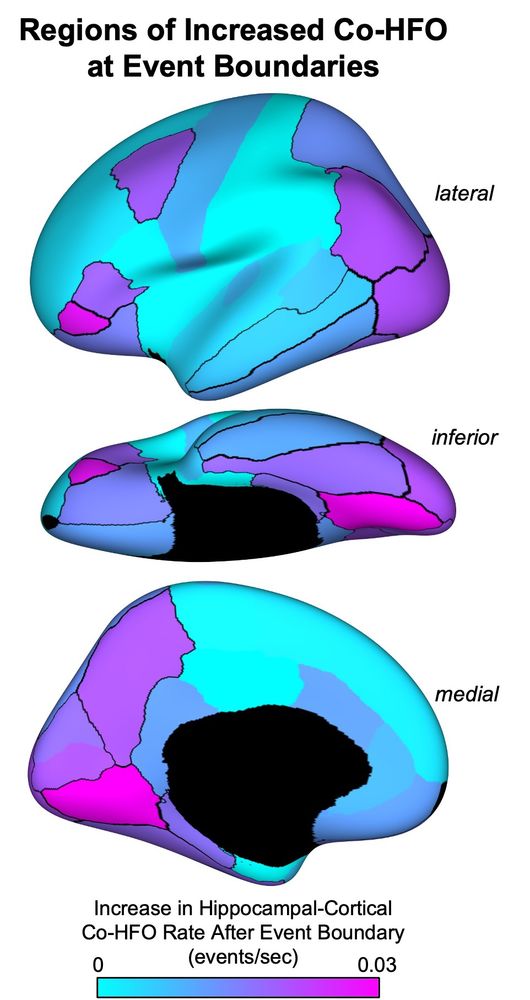
August 2, 2025 at 1:59 AM
We also looked beyond the hippocampus and found that coincident HFOs (co-HFOs) across the hippocampal-cortical network also increase after event boundaries. Interestingly, these events predominate in cortical regions that have been previously shown to underlie event segmentation.
Our human intracranial recordings allowed us to localize these HFO increases to the right-anterior hippocampus and the CA1 subfield. This specificity supports models where the anterior hippocampus integrates information across longer timescales. (4/n)
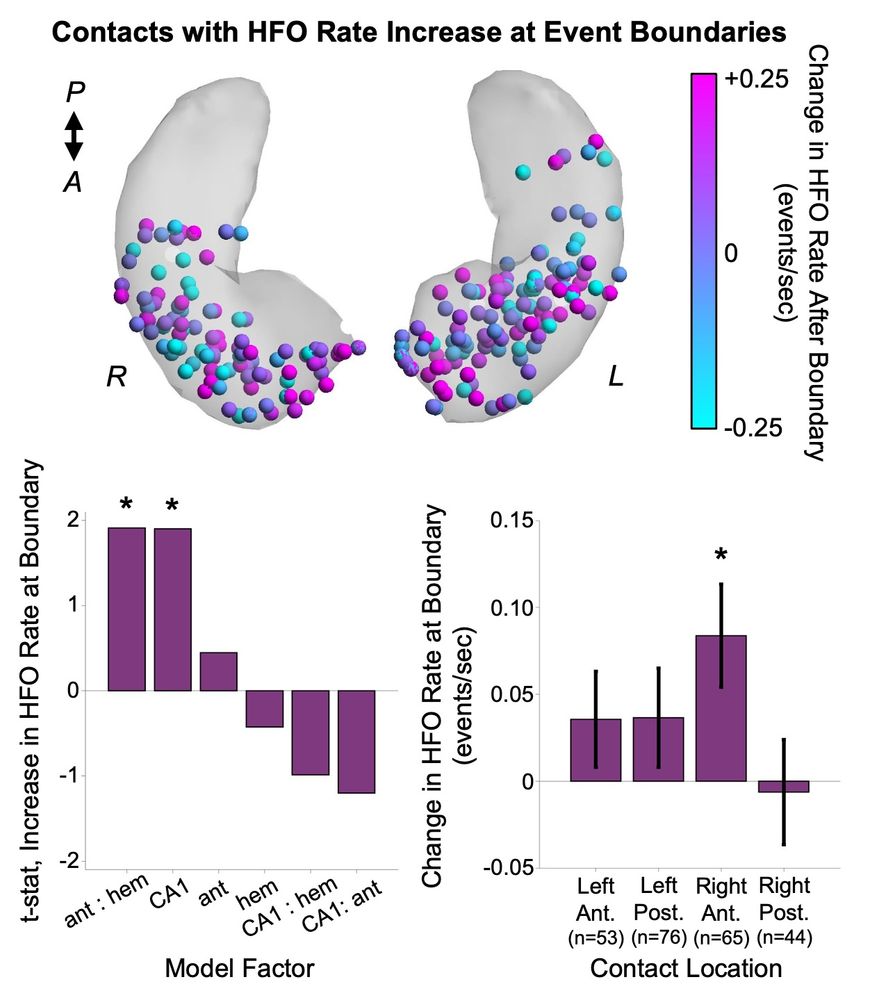
August 2, 2025 at 1:59 AM
Our human intracranial recordings allowed us to localize these HFO increases to the right-anterior hippocampus and the CA1 subfield. This specificity supports models where the anterior hippocampus integrates information across longer timescales. (4/n)
HFOs are a highly-synchronizing phenomenon, and we found that HFOs increase in activity ~2sec after the brain detects an “event boundary,” or timepoints where one “chunk” of an experience ends and another begins. This is a critical window for memory consolidation, or “replay.”
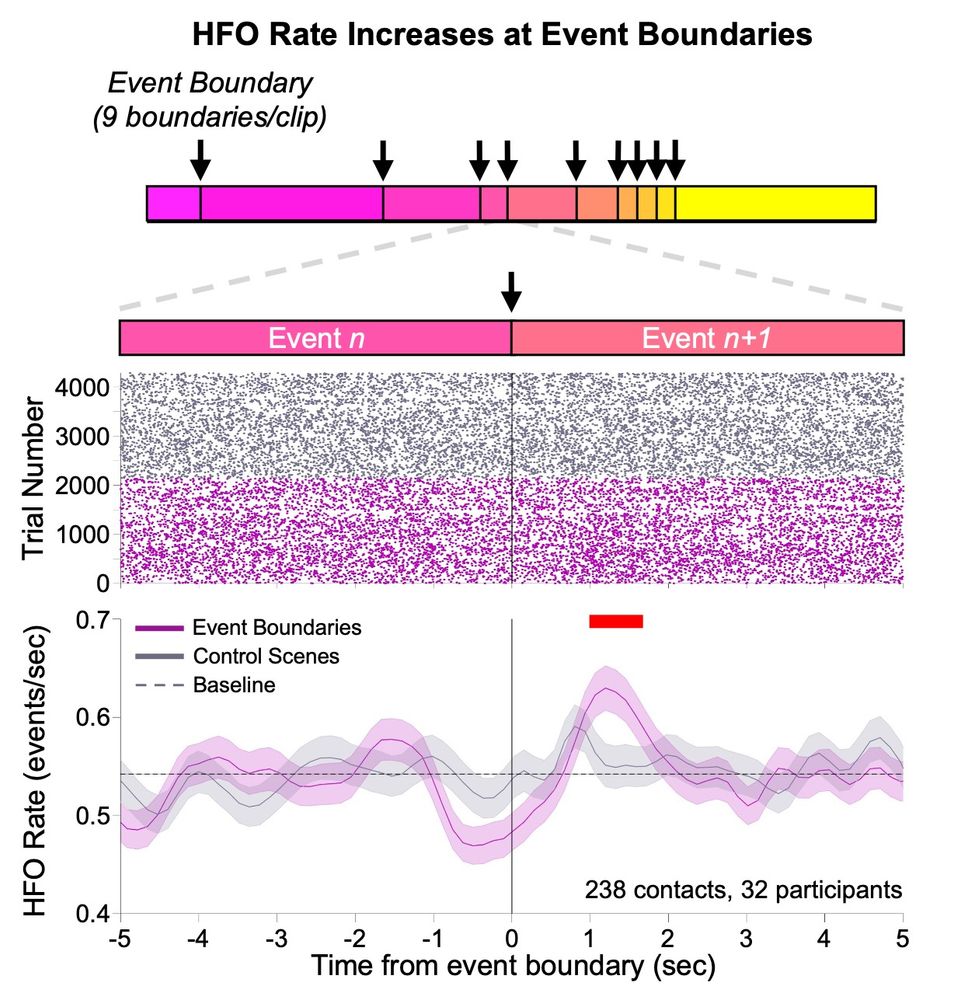
August 2, 2025 at 1:59 AM
HFOs are a highly-synchronizing phenomenon, and we found that HFOs increase in activity ~2sec after the brain detects an “event boundary,” or timepoints where one “chunk” of an experience ends and another begins. This is a critical window for memory consolidation, or “replay.”
The strength of motif reactivation during replay and retrieval was related with whether participants later remembered the event. We also found that these unique motifs lingered for three subsequent replay periods. Hence, HFOs may help us bind new memories to older ones! (9/n)
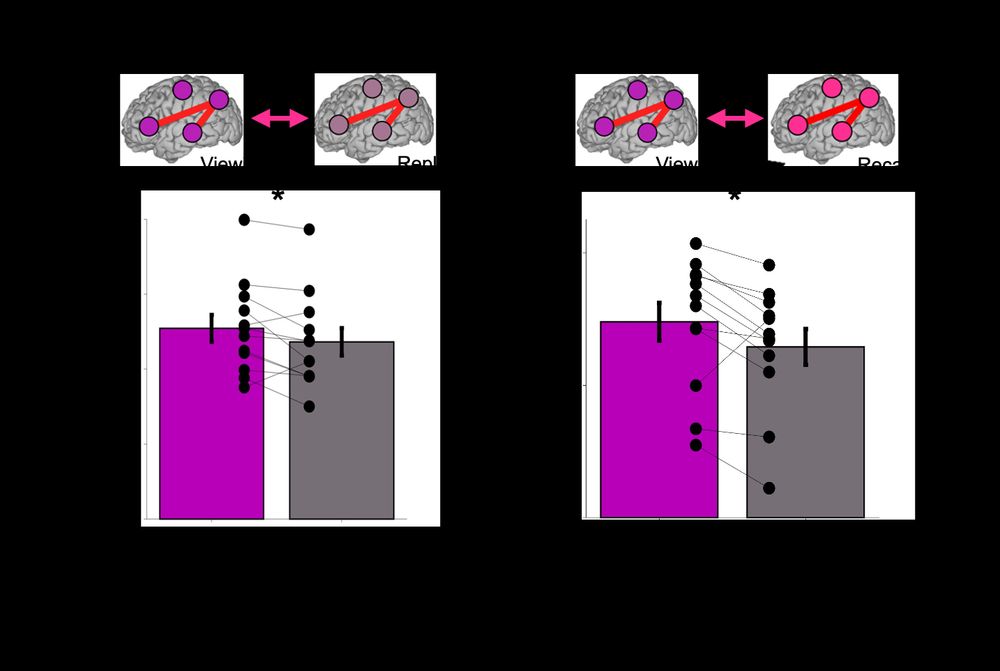
July 30, 2025 at 1:23 AM
The strength of motif reactivation during replay and retrieval was related with whether participants later remembered the event. We also found that these unique motifs lingered for three subsequent replay periods. Hence, HFOs may help us bind new memories to older ones! (9/n)
Co-HFO motifs showed specificity for events and re-occurred not only in the immediate post-boundary “replay period” but also during later recall. This links co-HFOs with the reinstatement of memories during consolidation and retrieval. (8/n)

July 30, 2025 at 1:23 AM
Co-HFO motifs showed specificity for events and re-occurred not only in the immediate post-boundary “replay period” but also during later recall. This links co-HFOs with the reinstatement of memories during consolidation and retrieval. (8/n)
We then identified “co-HFO motifs,” or event-specific spatiotemporal patterns of co-HFOs that occurred during initial event viewing. We looked to see if these motifs re-emerged at event boundaries (replay) and during free recall (retrieval). (7/n)

July 30, 2025 at 1:23 AM
We then identified “co-HFO motifs,” or event-specific spatiotemporal patterns of co-HFOs that occurred during initial event viewing. We looked to see if these motifs re-emerged at event boundaries (replay) and during free recall (retrieval). (7/n)
Further, co-HFO locations changed based on the “granularity” of the segmentation. Major event boundaries were more associated with co-HFOs in higher-order association cortices while simpler boundaries (e.g. camera angle changes) more predominantly activated lower-order visual regions. (6/n)
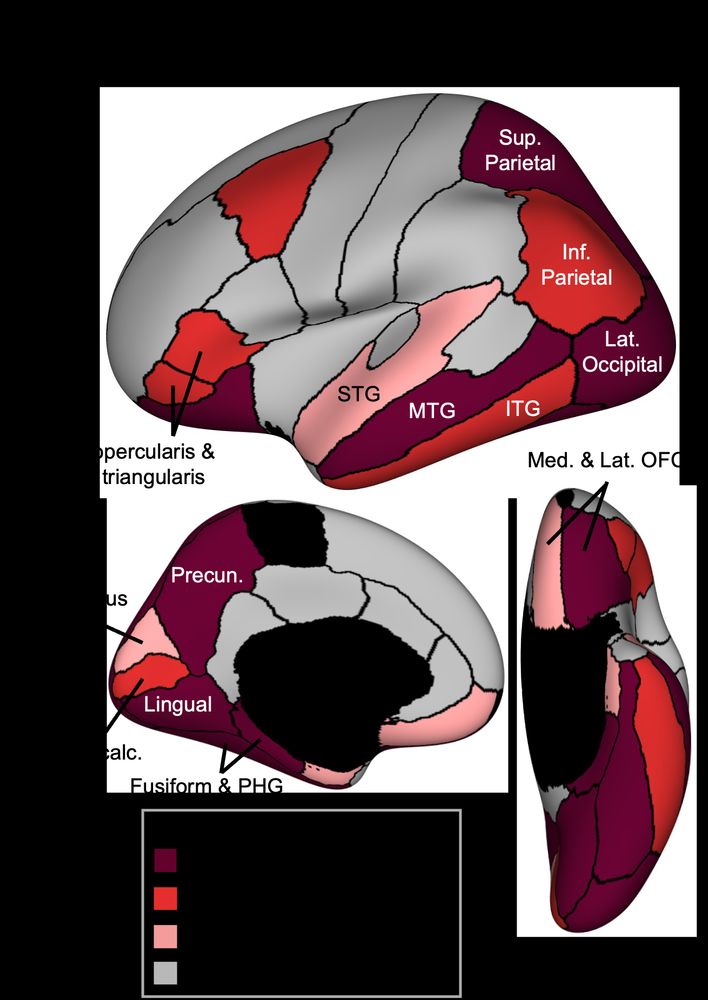
July 30, 2025 at 1:23 AM
Further, co-HFO locations changed based on the “granularity” of the segmentation. Major event boundaries were more associated with co-HFOs in higher-order association cortices while simpler boundaries (e.g. camera angle changes) more predominantly activated lower-order visual regions. (6/n)
We also looked beyond the hippocampus and found that coincident HFOs (co-HFOs) across the hippocampal-cortical network also increase after event boundaries. Interestingly, these events predominate in cortical regions that have been previously shown to underlie event segmentation. (5/n)
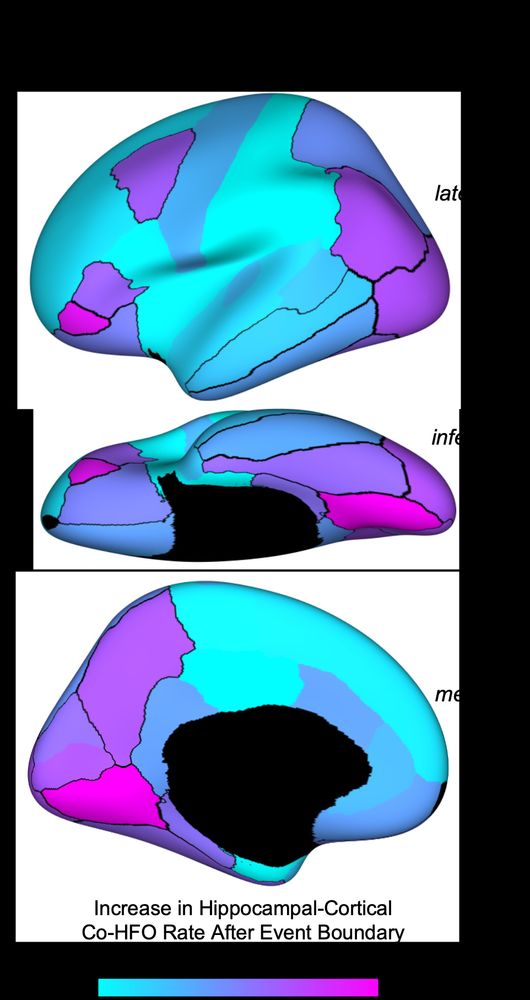
July 30, 2025 at 1:23 AM
We also looked beyond the hippocampus and found that coincident HFOs (co-HFOs) across the hippocampal-cortical network also increase after event boundaries. Interestingly, these events predominate in cortical regions that have been previously shown to underlie event segmentation. (5/n)
Our human intracranial recordings allowed us to localize these HFO increases to the right-anterior hippocampus and the CA1 subfield. This specificity supports models where the anterior hippocampus integrates information across longer timescales. (4/n)
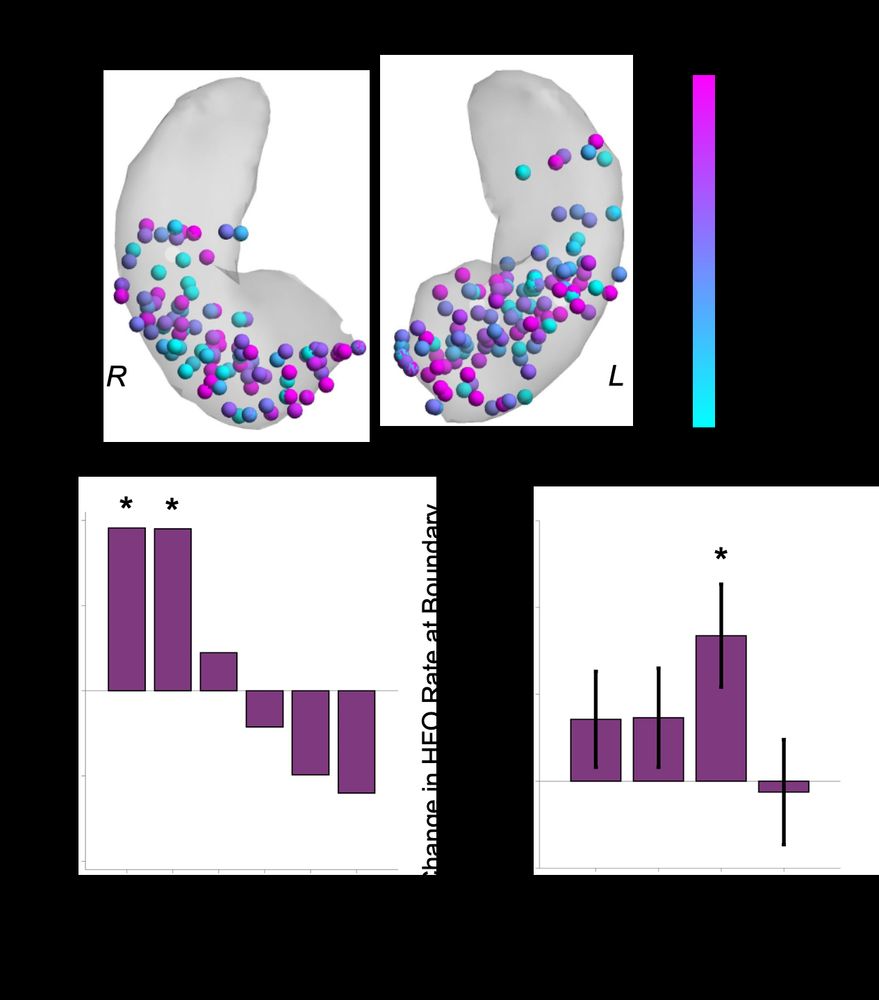
July 30, 2025 at 1:23 AM
Our human intracranial recordings allowed us to localize these HFO increases to the right-anterior hippocampus and the CA1 subfield. This specificity supports models where the anterior hippocampus integrates information across longer timescales. (4/n)
HFOs are a highly-synchronizing phenomenon, and we found that HFOs increase in activity ~2sec after the brain detects an “event boundary,” or timepoints where one “chunk” of an experience ends and another begins. This is a critical window for memory consolidation, or “replay.” (3/n)
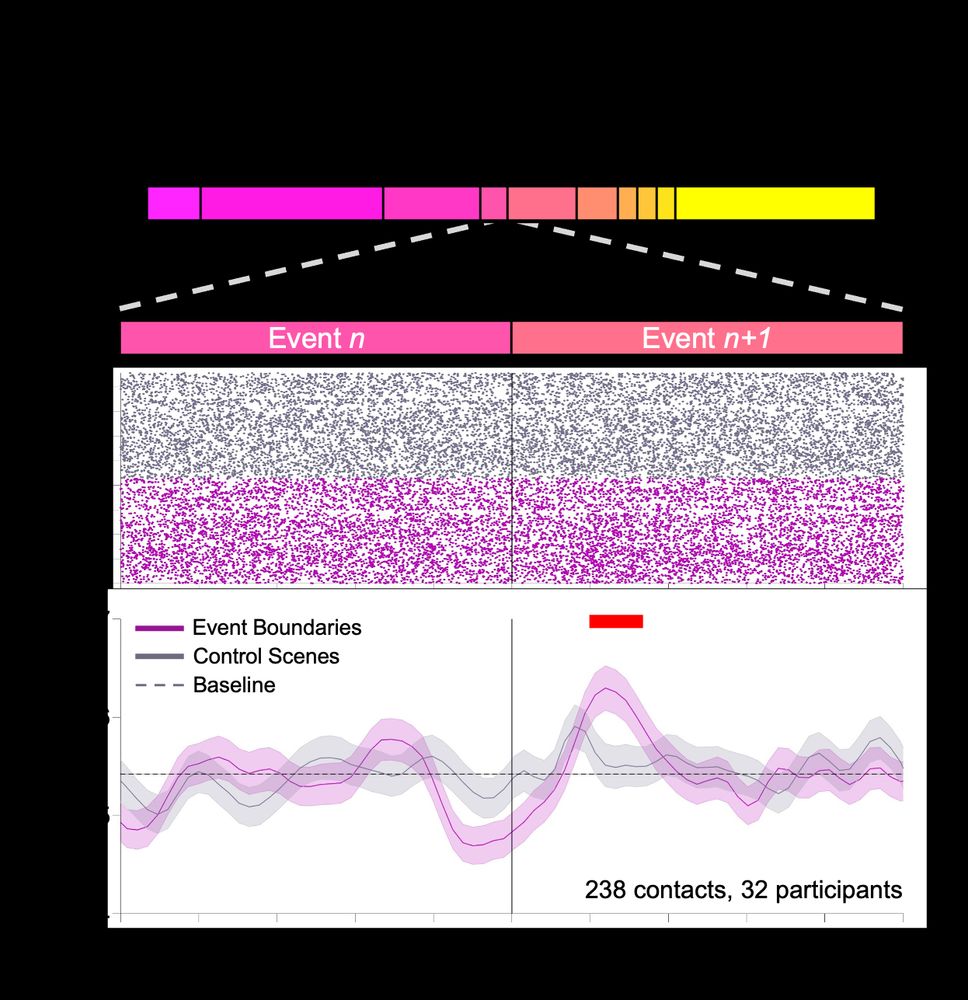
July 30, 2025 at 1:23 AM
HFOs are a highly-synchronizing phenomenon, and we found that HFOs increase in activity ~2sec after the brain detects an “event boundary,” or timepoints where one “chunk” of an experience ends and another begins. This is a critical window for memory consolidation, or “replay.” (3/n)

